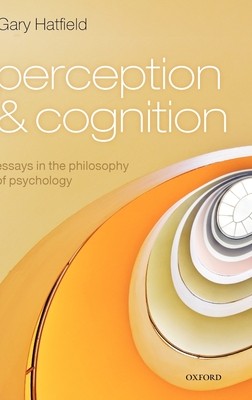
- We will send in 10–14 business days.
- Author: Gary Hatfield
- Publisher: Oxford University Press, USA
- ISBN-10: 0199228205
- ISBN-13: 9780199228201
- Format: 15.6 x 23.4 x 3 cm, hardcover
- Language: English
- SAVE -10% with code: EXTRA
Reviews
Description
How do we see? This question has fascinated and perplexed philosophers and scientists for millennia. In visual perception, mind and world meet, when light reflected from objects enters the eyes and stimulates the nerves leading to activity in the brain near the back of the head. This neural activity yields conscious experiences of a world in three dimensions, clothed in colors, and immediately recognized as (say) ground, sky, grass, trees, and friends. The visual brain also produces nonconscious representations that interact with other brain systems for perception and cognition and that help to regulate our visually guided actions. But how does all of this really work? The answers concern the physiology, psychology, and philosophy of visual perception and cognition. Gary Hatfield's essays address fundamental questions concerning, in Part I, the psychological processes underlying spatial perception and perception of objects; in Part II, psychological theories and metaphysical
controversies about color perception and qualia; and, in Part III, the history and philosophy of theories of vision, including methodological controversies surrounding introspection and involving the relations between psychology and the fields of neuroscience and cognitive science. An introductory chapter provides a unified overview; an extensive reference list rounds out the volume.
EXTRA 10 % discount with code: EXTRA
The promotion ends in 17d.03:41:36
The discount code is valid when purchasing from 10 €. Discounts do not stack.
- Author: Gary Hatfield
- Publisher: Oxford University Press, USA
- ISBN-10: 0199228205
- ISBN-13: 9780199228201
- Format: 15.6 x 23.4 x 3 cm, hardcover
- Language: English English
How do we see? This question has fascinated and perplexed philosophers and scientists for millennia. In visual perception, mind and world meet, when light reflected from objects enters the eyes and stimulates the nerves leading to activity in the brain near the back of the head. This neural activity yields conscious experiences of a world in three dimensions, clothed in colors, and immediately recognized as (say) ground, sky, grass, trees, and friends. The visual brain also produces nonconscious representations that interact with other brain systems for perception and cognition and that help to regulate our visually guided actions. But how does all of this really work? The answers concern the physiology, psychology, and philosophy of visual perception and cognition. Gary Hatfield's essays address fundamental questions concerning, in Part I, the psychological processes underlying spatial perception and perception of objects; in Part II, psychological theories and metaphysical
controversies about color perception and qualia; and, in Part III, the history and philosophy of theories of vision, including methodological controversies surrounding introspection and involving the relations between psychology and the fields of neuroscience and cognitive science. An introductory chapter provides a unified overview; an extensive reference list rounds out the volume.


Reviews